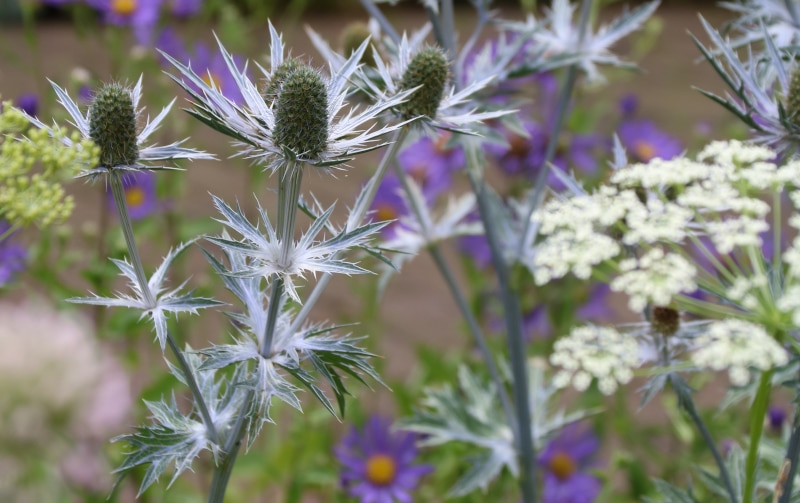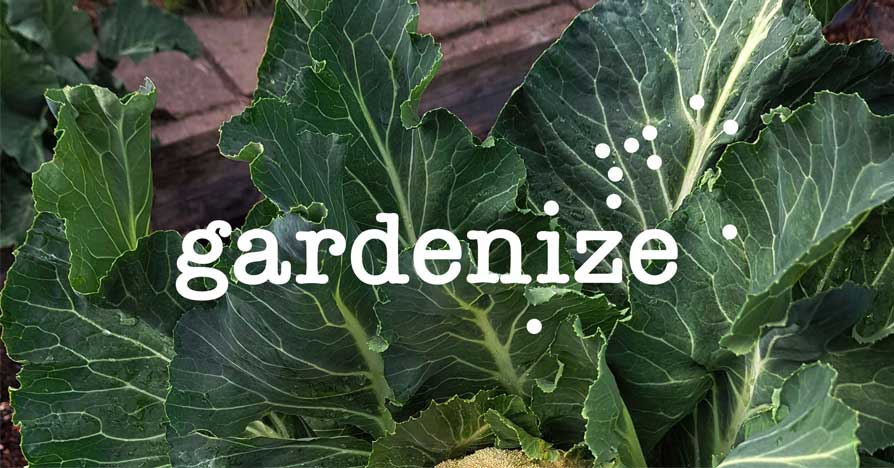The 3 most beautiful thistles for your garden
Thistles are often dismissed as weeds because of their spines, and don’t make it into our perennial beds. Completely unfair, because with their extravagant blooms and bluish sheen, they bring variety to your garden and can be easily combined with other perennials. Here, we present to you our three spiky favorites.

Why Thistles Deserve a Spot in Your Garden
“Thistle” isn’t a specific term for one plant, but is commonly used to describe any prickly plant, which applies to various genera. What they all share are thorns, which is why many garden owners neglect or avoid them when planting. Yet these perennials, with their uniquely shaped blooms, are real eye-catchers and as true sun-lovers, they also thrive in dry locations.
There are notable differences between thistles, particularly in their longevity. Sea holly (Eryngium) and globe thistles (Echinops) are long-lived perennials for your garden beds. They are hardy and grow back year after year. On the other hand, ring thistles and plume thistles are short-lived. In the first year, they form a rosette of leaves and bloom the following year. They spread by seed, so you can either grow new plants yourself or let nature take its course. Regardless of which one you choose, all thistles are insect magnets and attract a variety of butterflies and moths.

Location and Care Tips for Thistles
Sea holly and globe thistles prefer a spot with at least four hours of sunlight. They can tolerate partial shade, but the soil should be well-drained and not too clayey. Plume thistles like a bit more moisture but also adapt well to sunny locations.
Globe and ornamental thistles can be planted both in spring and fall. Make sure to give them enough space, as they can spread up to 70 cm wide depending on the variety. For biennial thistles, sowing is best done in late summer. If you don’t place them at the edge of your perennial beds, their thorns are unlikely to bother you, and you can enjoy their beauty without getting pricked.
Thistles don’t require special care. They are not particularly susceptible to diseases or pests. However, they don’t thrive in overly clayey and wet soils. When planting, it’s best to add some sand or gravel and loosen the soil well beforehand. Prune them in March, and they will provide lovely structure in your garden throughout the winter, offering shelter for insects.

Three Thistle Favorites for Your Garden
Flat-leaved Sea Holly (Eryngium planum)
Eryngium planum is the original species of flat-leaved sea holly. Native species are often less demanding and more robust than their cultivated relatives. Known since 1576, flat-leaved sea holly is a native perennial. It features numerous hemispherical blooms. The blue flower heads are a real eye-catcher and provide structure to your perennial bed from late August through winter. Flat-leaved sea holly can grow up to 60 cm wide and 1 meter tall.

Plant Combinations for Sea Holly and Plume Thistle
Thistles stand out not only for their flower shapes but also for their foliage. These striking perennials give your garden bed a unique structure and create visual interest. Since most thistle species thrive in dry and sunny locations, you should choose perennials with similar requirements for your combinations. Along with various grasses like bottlebrush grass, the following plants pair particularly well:
- Yellow Scabious (Scabiosa ochroleuca): Its delicate stems and leaves, combined with yellow blooms, create a wonderful contrast.
- Russian Sage (Perovskia abrotanoides): Its blue flowers complement the color scheme and harmonize the combination.
- Coneflower (Echinacea): You can bring different colors to your bed with coneflowers. Depending on the variety, you can find shades ranging from green and yellow to red and white. They also prefer similar growing conditions to thistles.
- Yarrow (Achillea millefolium ‘Kirschkönigin’ / ‘Cerise Queen’): This plant loves warmth and sunlight. The ‘Kirschkönigin’ variety features cherry-red blooms. Its flower clusters add diversity in form to your garden bed.
- Catmint (Nepeta x faassenii ‘Walker’s Low’): A great companion for the front of the bed. It is incredibly resilient, and the ‘Walker’s Low’ variety is also sturdy.
GARDENIZE GARDEN APP
Your garden friend with a green thumb and photographic memory.
Gardenize is an app for gardening and cultivation that helps you to overview, understand and develop your garden and your crops. Organizing your garden makes it easier to succeed and your Gardenize app structures all information and make it searchable. You’ll get tips and inspiration from other Gardenizers around the world. All Gardenize basic features are free to use. You can download the app from the App Store or Google Play, or create an account directly in the web app in your browser.
Read more about gardening and plants here
Images published on the Gardenize website belong to Gardenize AB and may not be used without permission.



